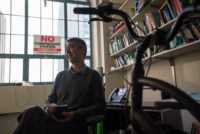A citizens’ group has filed an emergency petition asking the Nuclear Regulatory Commission to postpone relicensing of the Seabrook Nuclear Power Station until the Atomic Safety and Licensing Board can review concrete degradation problems at the plant.
The emergency petition was filed by C-10 Education and Research Foundation, a group of citizen safety experts that monitors airborne radiation near the New Hampshire plant. C-10 filed the petition after the NRC announced it was planning to issue a renewed license and amendment early this year despite a pending hearing with the ASLB this summer on alkali silica reaction (ASR) issues. The NRC completed its review of NextEra’s license application in early December.
The NRC says it is satisfied with a license amendment about how owner NextEra will manage the effects of concrete degradation at the plant based on tests NextEra had run at the University of Texas Ferguson Structural Engineering Laboratory.
Joe Donoghue, NRC acting director for relicensing, said at a Feb. 13 meeting that the NRC is moving forward with the license renewal for Seabrook Station through 2050 after finding no safety issues. The plant has 11 years left on its existing license.
“The amendment review took more than two years and we think with our work done, we can promptly issue a license,” Donoghue said. NextEra says it has been working on the relicensing of the plant for nine years.
But Victor Saouma, a civil engineering professor at the University of Colorado and internationally recognized expert on alkali silica reaction, has reviewed the results of multi-year testing at the University of Texas lab and said in C-10’s petition that NextEra’s and the NRC staff’s conclusions “are not well-founded.” Saouma states that tests run at the lab were “substandard and inadequate.”
In the petition, Saouma voices three major concerns. First, concrete used in the lab is not representative of the concrete at Seabrook, he says. “This lack of representativeness cuts across virtually every level of the test, including characteristics of the materials tested, test conditions and assumptions about the behavior of concrete under finite element simulations.”
He adds that shear tests lack proper boundary conditions. “They are limited to out-of-plane shear and some large unexplained cracks may have corrupted the test results.”
Finally, he says the crack index measurements used “cannot provide a reliable assessment of the in-situ ASR expansion because a crack index measured on the surface (where the concrete is relatively dry) is not representative of what is happening inside the specimen where the relative humidity (essential for ASR) is much higher.”
Sen. Ed Markey (D-Mass.), whose statement was read at the Feb. 13 meeting, said he is concerned the NRC could prematurely approve Seabrook’s license amendment before the ASLB hearing this summer. He strongly urges the ASLB to hold the hearing before moving forward on licensing.
Concrete degradation was first discovered in 2009 at the Seabrook Nuclear Power Station and has been a safety concern for area residents. ASR cracks have occurred throughout the many of the facility’s buildings, including containment buildings, the diesel generator building and fuel storage building, as the result of moisture combined with a chemically reactive aggregate used in the plant’s construction.
A Dec. 14 letter from an NRC advisory committee to NRC Chairwoman Kristen Svinicki summarized the results of NextEra’s multi-year, large scale testing program at the Texas Lab. “Although ASR causes significant degradation of concrete strength properties as measured by standard core samples removed from ASR-degraded structures, the highly reinforced structures themselves did not experience an associated reduction in structural capacity,” it states.
“In fact, the presence of ASR actually increased the load-carrying capacity of such structures. This was a highly repeatable phenomenon, observed through numerous tests on large-scale specimens, fabricated with concrete intentionally subjected to accelerated ASR, well beyond the levels observed to date at Seabrook. Testing included shear capacity tests, reinforcement anchorage and beam flexure tests, as well as concrete anchor pullout tests in ASR-affected concrete.”
Despite the presence of the concrete degradation, NextEra spokesman Peter Robbins says Seabrook Station’s power plant and structures are sound and fully capable of performing their design functions. “ASR is a well-known, manageable condition, and after eight years of technical reviews the NRC has found that our plan to monitor and manage ASR for the long-term is effective.
He added that NextEra opposes the C-10 petition. “We see it as a last-minute and desperate attempt to upend the NRC’s process for license renewal.”
An NRC spokesman said the commission was not able to estimate how long it would take to respond to the emergency petition.




Post a comment to this article
Report Abusive Comment